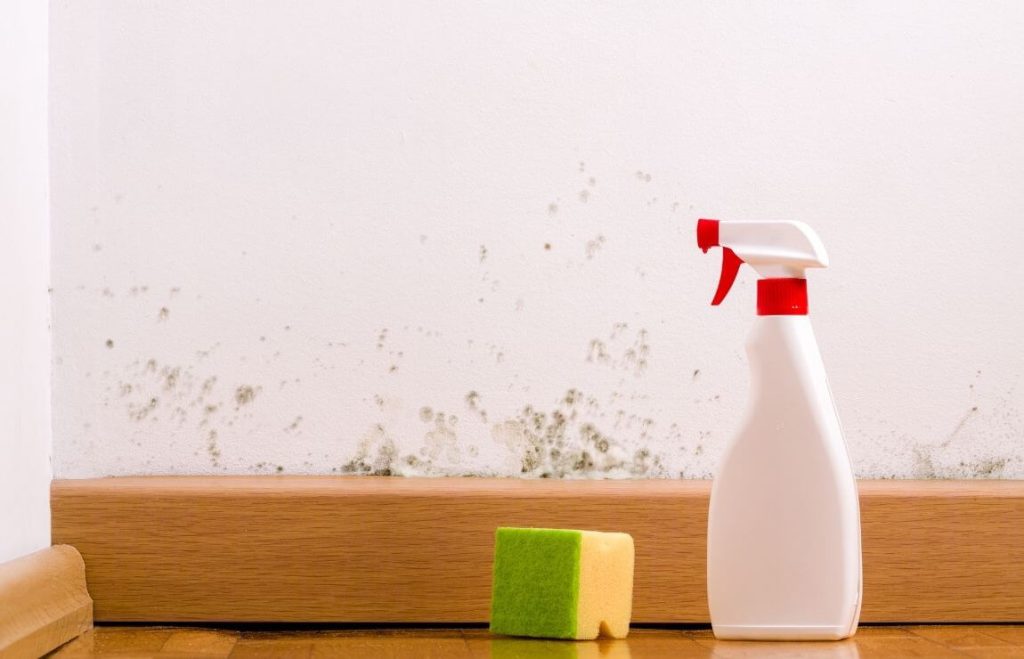Having those unsightly, yucky blotches of black stuff growing on our walls or ceiling at home is not only an eyesore, but a big health threat to everyone living under that roof. When we spot any mouldy food, we would quickly throw them out. But what if you spot those mould patches at home in hard-to-reach areas? Well, never put off to tomorrow what you can do today, especially so if it’s mould in the house!
Moulds are hazardous to people’s health in various ways. As mummies, we would definitely not want our little ones to be exposed to them. In this article, we will discuss the effects we may suffer from mould exposure, and ultimately how to keep our family and home safe and mould-free.
What Happens When We Are Exposed to Mould?
Moulds produce allergens and irritants, and just by inhaling or touching mould or mould spores may cause allergic reactions in people. More so for those who are more sensitive to allergies.
Some of the allergic reactions can be so common that you may think it’s the common cold or fever-type of symptoms. These symptoms include:
- Watery eyes
- Sneezing episodes
- Skin itching or rashes
- Runny nose
- Coughing
- Difficulty breathing
- Fatigue
- Headache
Being repeatedly exposed to mould for a long period of time can increase sensitivity towards it, and the reactions become more severe. It can also cause asthma attacks in those who are asthmatic.
The reactions can happen immediately or it can be a delayed one.
What Causes Mould to Grow in The House?
Moulds reproduce by means of spores, and they are so minuscule that you can’t see them with your naked eyes. They float in the air, and they thrive on wet surfaces. Hence, where you find water and moisture in the house, they are often the place that attracts mould to grow.
Areas in the house that has water leak problems is a big concern for mould growth. Any other areas with high condensation also need to be looked into.
Getting Rid of Mould
First things first, once you spot mould in your house, you need to clean it up immediately. There’s truly no time to waste on the clean-up. Address the problem area like a leakage within 48 hours to prevent further moulds to grow rapidly.
If you only clean it up and procrastinate on fixing the moisture problem, the mould will most likely come back again and again. The longer moulds are allowed to grow, the more damage to your property too. It can cause stubborn staining which may not go away completely.
Some Tips on Preventing and Cleaning Moulds
Increasing ventilation by having a window or a ventilation fan installed if there are no windows will help. Frequently cleaning and drying these damp areas will also help. The best way is to ensure no dampness.
Some ways to reduce the humidity indoors is to use air conditioners or de-humidifiers when needed.
When cleaning, wear a facial mask to prevent inhaling the mould, and wear a pair of rubber gloves so that your skin doesn’t come into contact with it. You may even want to put on a pair of goggles to avoid getting mould or mould spores in your eyes.
Use water and detergent to scrub off mould. If you choose to use a strong cleaning solution, ensure that the gloves you’re wearing are made of natural rubber, neoprene, nitrile, polyurethane or PVC.
If the mould problem is too difficult to clean out by yourself, consider getting professional help to do the job. It will be well worth the money simply for our family’s health.
For more insightful stories and children care tips, stay tuned to Motherhood Story!
